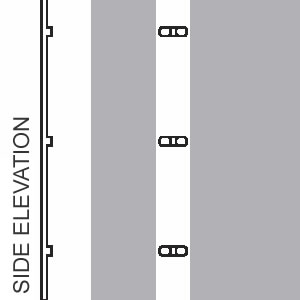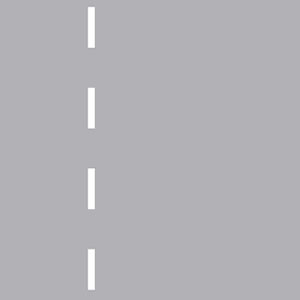There can often be a little confusion as to exactly what the single white lines at the edge of the road mean in terms of stopping and parking and where they are typically located.
There are certain areas where parking on a single white line is in fact illegal and those that permitted. If you are taking a driving test however, it is worth noting that a driving examiner will not try and ‘trick’ you into parking in an illegal area such as double yellow lines or single yellow lines during the times shown on the sign. They may park on the left when it’s safe and legal to do so.
Explained are the various types of single white lines found at the edge of the road, their meaning and whether or not you can legally park on them.

Continuous single white line
A continuous single white line used at the edge of a carriageway, other than at junctions, exits from private drives and lay-bys. Used on the left-hand side of the road and alongside the central reservation of dual carriageway roads.

Continuous single white line with raised ribs
Alternative edge of carriageway marking, with raised ribs to provide audible and tactile warnings when the line is being crossed. They are used on motorways and other roads with hard shoulders or hard marginal strips.

Broken white line
Edge of main carriageway at a junction (particularly where a slip road leaves or joins), at an exit from a private driveway or at a lay-by. Also used to divide the main carriageway from a traffic lane that leaves the main carriageway at a junction ahead (lane drop).

Broken white line
Edge of main carriageway at a junction or at an exit from a private driveway. Used in conjunction with “give way” markings on the side road.
Parking on single white lines
If the road has a continuous single white line running along the left side, parking is considered legal but in some cases may be used to discourage parking – though this is subject to localised laws such as no parking enforcement signs or other such prohibited parking markings. Other such issues could also raise potential legal issues such as parking in front or a dropped kerb (see dropped kerb parking laws), private driveway, too close to a junction for example, but generally these are separate issues in their own right.
However, in certain cases the single white line represents that there is no pavement – if this is the case then it would be illegal to park on a single white line. Such locations can often be areas where no street lighting is available and the continuous white line is used to define the edge of the carriageway. For further information regarding parking on pavements, see:

There is a white line painted on the footpath and broken line across entrances.This is dangerous .surely this line should be on the road
Hi, “However, in certain cases the single white line represents that there is no pavement – if this is the case then it would be illegal to park on a single white line. Such locations can often be areas where no street lighting is available and the continuous white line is used to define the edge of the carriageway.””
Can you clarify this i.e Where would I find this law? When does a single white line represents that there is no pavement ?
The Highway Code has no mention of this law
Hello David,
As with many laws not mentioned in the Highway Code, we wanted to verify this. It is text supplied via Cambridgeshire Constabulary – Road Policing Unit.
On a corner there is a white line 20 feet either side of the corner there is a pavement
I have an H bar white line in front of my driveway as we need disabled access, as does the neighbour opposite our driveway. We keep getting a pickup parking on those lines making turning right out of our driveway difficult and dangerous as we are forced to turn into the on coming lane.
Is this vehicle breaking the law or not?
Hi John,
The white line (H-bar) has no legal status, it’s simply a road marking to highlight the presence of a driveway. Your dropped kerb on the other hand can result in action being taken if a vehicle is seen to be obstructing it. This will be dealt with via your local council, though any action taken does vary from councils. I would recommend contacting your local council and asking what action they’re prepared to take and what information they require from you.